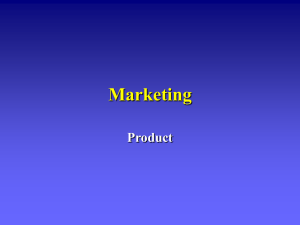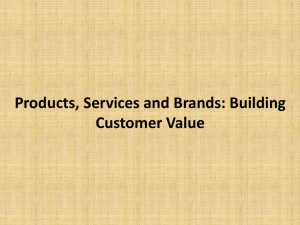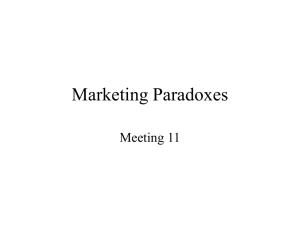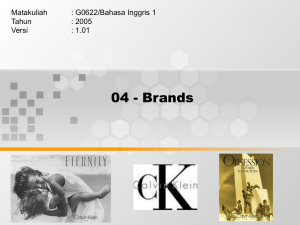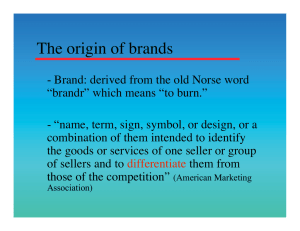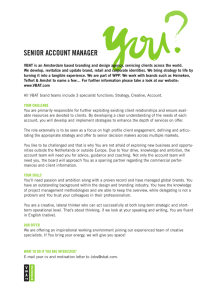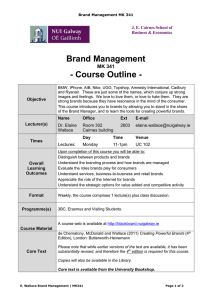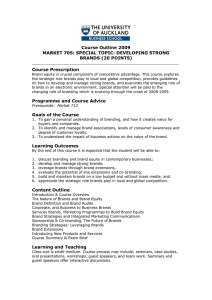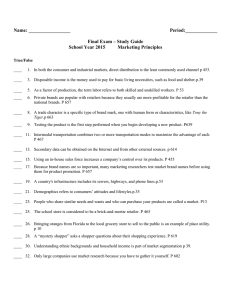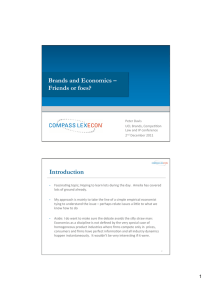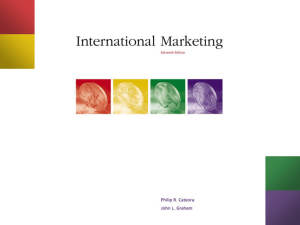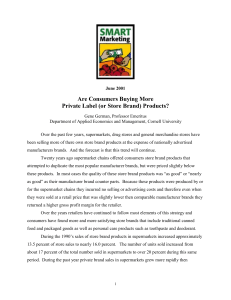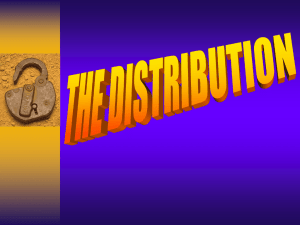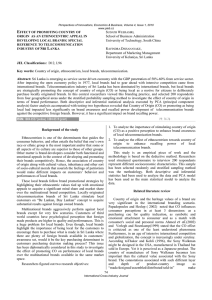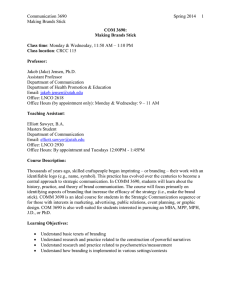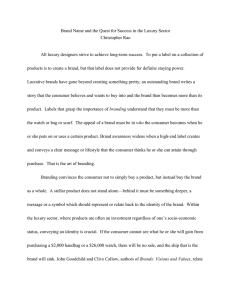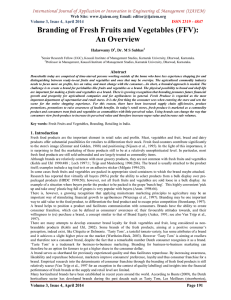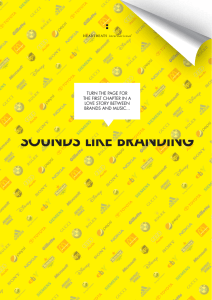Product
advertisement
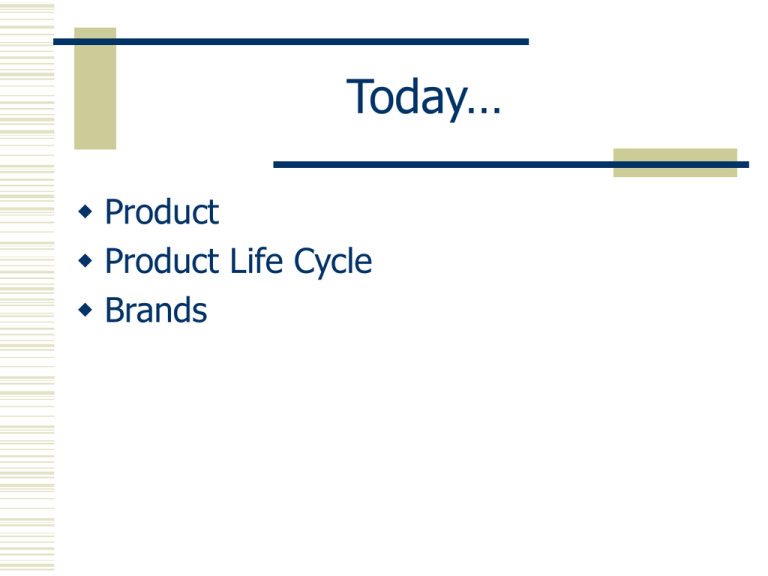
Today… Product Product Life Cycle Brands Product/Service Product The good or service which the business is trying to sell. Most important element a it determines what the price will be (Price), how it is promoted(Promotion) and where it is sold (Place). Core Product provides a basic need Augmented Product is made more attractive to the customer by having additional features. Product Life Cycle Products have a natural ‘lifespan’. Some are very short others are around for decades. The life of a product can be prolonged by using extension strategies. However all products go through a number of distinct phases. Stages in Cycle Development Stage – many products will never progress past this stage. Development of new products is essential but can be very costly. Before launching it may be test-marketed. Modifications can then be made based on feedback. Introduction Stage – heavy advertising at this stage to make consumers aware of the product. Sales are slow and costs are high. Growth Stage – consumers more aware of the product and sales start to grow rapidly. It is during this stage that the product begins to become profitable. Stages in Cycle Maturity Stage – sales reach their peak. Advertising costs are lower and development costs should have been repaid. The product is at its most profitable. The business will work to keep the product in this stage for as long as possible. This can be done by using extension strategies. Decline Stage – Sales and profits start to fall. Mobile phone sales are beginning to decline if firms wish to stay in business they will have to create new phones or new demand for phones. Product Life Cycle Extension Strategies Reducing Price Therefore Promoting More Frequent Use of Product – reduce cost of texting to mobile phones. Developing New Markets for Existing Product – Computer were originally manufactured for the business market, moved into home market. Finding New Uses for Existing Products – fire lighters now used for barbeques. Extension Strategies Develop a Wider Range of Products – new versions of same product can produce new interest from consumers. Irn Bru – range of can and bottle sizes, fruit chews, ‘alco-pop’ market. Developing Styling Changes – introducing slightly different product – football strips. Effects of Extension Strategies Branding Branding is used to create USP’s (unique selling propositions) and ESP’s (emotional selling propositions) The business chooses a word or symbol, or both, then registers them so that they can only be used on its products. Baxter’s, Oxo, Cadbury’s and Heinz are all well-known brand names. Benefits of Branding Instant recognition of the product by the customer. Brand loyalty – repeat purchases Higher prices can be charged Quality is associated with it Easier to launch new products Good after sales service May lead to purchases of other products with same brand name Drawbacks of Branding Time is taken to establish a brand Promotion costs will be high Bad publicity for one product can affect the whole range of same-brand products Fake products may appear. These imitators are very difficult to stop. (Burberry, Rolex and Calvin Klein who can charge premium prices for their products suffer most at the ands of the forgers.) Own Brands Most of the supermarket chains, and large retailers such as Boots, offer a wide range of products under their own brand names. These can be produced by the supermarket or by a manufacturer who is contracted to produce goods for the supermarket. Advantages of Own Brands Own brands will attract more customers and more sales within the store. Producer will have guaranteed sales Products are cheaper Disadvantages of Own Brands Some customers believe ‘own brands’ are of lower value than established brand names (although this is not necessarily true).

